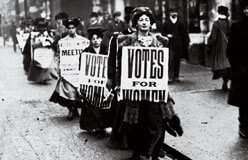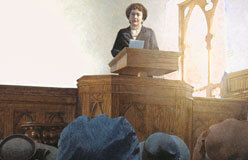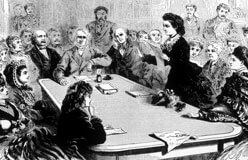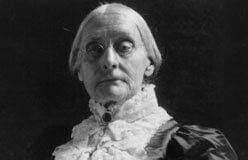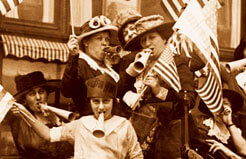Suffragists kept spreading their message. They spoke all over the country.
They published many magazines and books. They built alliances with other groups. They also asked Congress to help. But it wasn’t easy to win the vote. After all, they didn’t have the most powerful weapon of democracy—the right to vote. But as Susan B. Anthony said on her 86th birthday, talking about other suffragists, “...with such women consecrating [dedicating] their lives, failure is impossible!”
